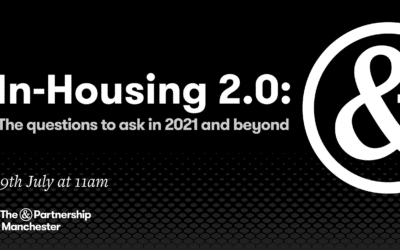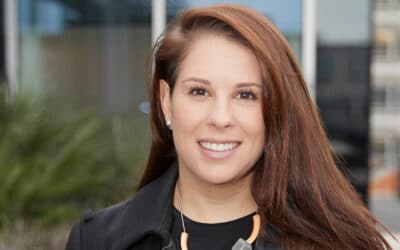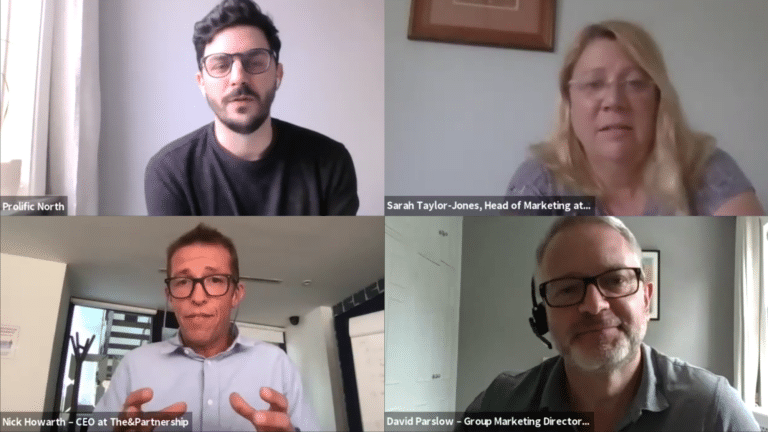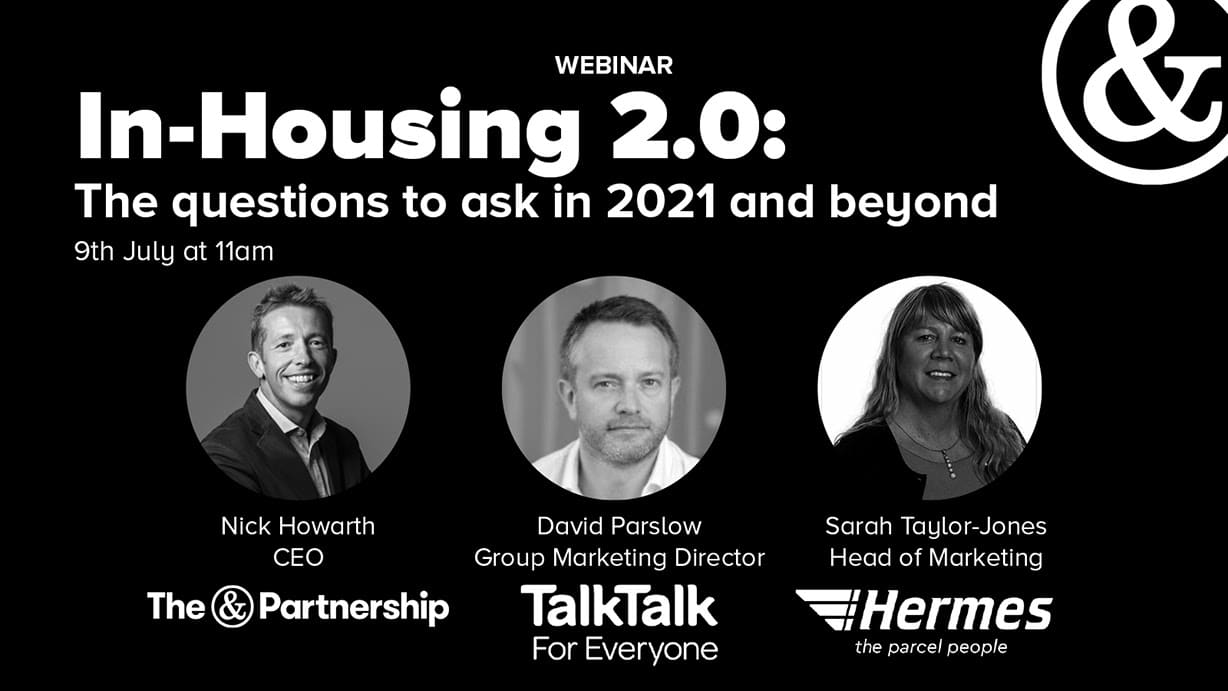Prolific North, in collaboration with The&Partnership, hosted the ‘In-Housing 2.0: The questions to ask in 2021 and beyond’ webinar event on Friday July 9th to reflect on the future of in-housing.
The panellists explored the challenges and evolution of in-housing to a more ‘integrated’ model, and debated what the future holds beyond 2021.
Speakers:
- Nick Howarth, CEO, The&Partnership
- David Parslow, Group Marketing Director, TalkTalk
- Sarah Taylor-Jones, Head of Marketing, Hermes
Integrated model and speed to market
The panel opened up the discussion by exploring how their businesses operate, and explored different models of in-housing.
For Nick Howarth of advertising and communications agency The&Partnership, the company is focused on an integrated model but has trialled various models along the way.
The agency has been “experimenting and evolving” with full-service agency teams for a broad range of clients, including for its founding client TalkTalk – based in Salford.
On the models of in-housing, Howarth explained it is a “real mix” as, at The&Partnership, each agency team is built “bespoke” for individual clients – but shares similarities in principle of a “fully integrated” team.
Howarth explained the importance of an integrated team working together as “the chemistry, dynamism and agility you get from media, creative, productive and strategy all working together in the same space I think is really critical. It is an absolute game-changer.”
The benefits of an agency working in close proximity to its client, he said, is that it can “unlock an additional layer of cost-efficiency,” as speed to market can be a competitive advantage.
David Parslow of TalkTalk agreed with Howarth’s comments and explained that at times TalkTalk may only have a day to turn a campaign around particularly in a “dynamic sector where we need to be very responsive,” and this would not be possible using the “old” model of in-housing.
Having a client team and full agency team on-site can be an advantage as it “feels like a much more natural extension of the team,” said Parslow.
“Having the team on-site makes me much more likely to involve them.”
On the other hand, at Hermes, Sarah Taylor-Jones explained the full remit of marketing has been internal – aside from its PR agency.
On in-housing, she said at times the “challenges can outweigh the benefits” – it can be viewed as “free” with an internal team often being asked to do tasks it wouldn’t typically contemplate if it had a cost attached externally.
“We have been very internally focused and need to become more creative, so by bringing in some of the agencies it freshens it up,” Taylor-Jones said on bringing on board agencies to fill in gaps of the in-house team.
In terms of evolution, Howarth said that, increasingly, clients “want access to quite specialist talent at certain points of their marketing calendar.”
On the integrated model, he added it “is not a panacea to solve those things; you still need talented people and great working processes.”











